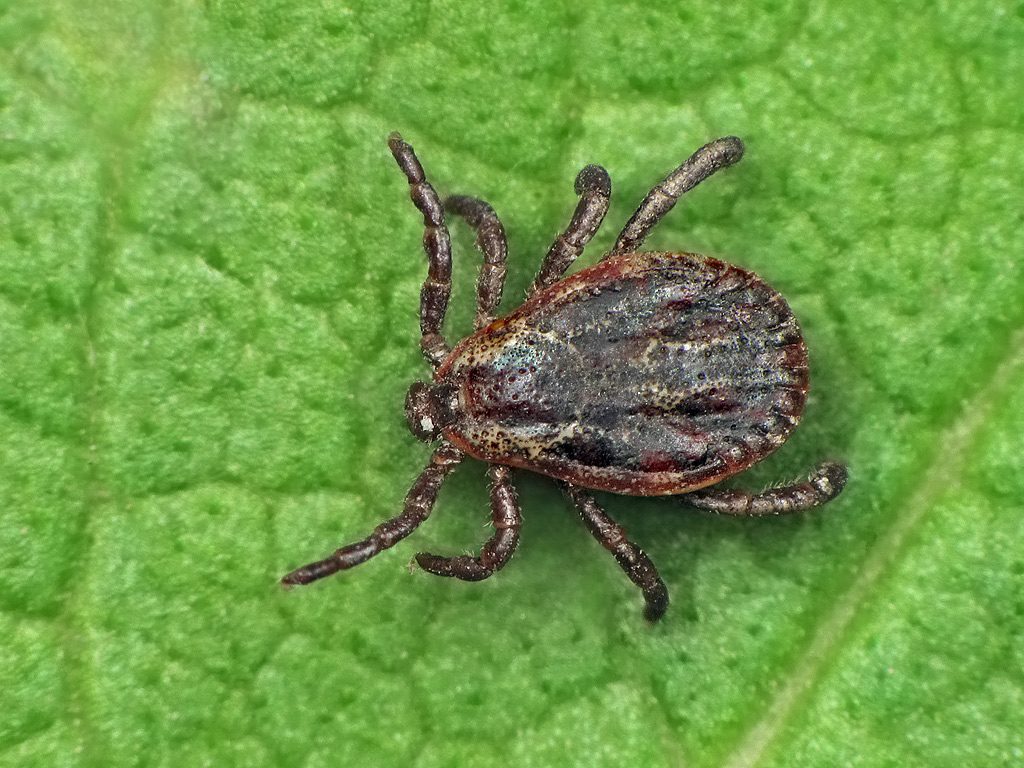It’s no secret that the tick population is exploding here in New England. Warmer winters and shorter periods of deep freezes have created the perfect environment for these creepy-crawlers to multiply. Ticks are not only a nuisance, they also carry a wide variety of bacteria and parasites that can infect you and your pets. In this post, we cover some of the most common tick-borne illnesses to be aware of.

Lyme Disease
The most common tick-borne disease by far is Lyme disease, which affects over 11,000 dogs in New Hampshire alone. The disease is transmitted to your pet via a bite from an infected deer tick (also know as blacklegged ticks). This type of tick is one of the four types of biting ticks prevalent in New Hampshire. The infected tick must be attached to your pet for 36-48 hours for the transmission of Lyme to occur, and symptoms can develop anywhere from two to five months after the initial bite.
Symptoms of Lyme disease range from lethargy, joint pain, and lameness to more serious conditions such as decreased appetite and fever. Unlike many humans, animals do not get a red “bullseye” rash on their skin after they’ve been bitten by an infected tick. Lyme disease is generally diagnosed by a blood test. Animals are usually treated with a long course of antibiotics, for about one month. However, your veterinarian may decide not to prescribe antibiotics if your pet is not showing symptoms.
Anaplasmosis
Anaplasmosis is becoming increasingly more common among pets in the New England area, as forms of the disease are carried by two of the types of biting ticks in this area, the deer tick and the brown dog tick.
Pets will usually begin to show signs of Anaplasmosis within a few weeks of contact with an infected tick. Symptoms are very similar to those of Lyme disease (joint pain, lethargy, etc.), but vomiting, diarrhea, and blood or nervous system symptoms are additional concerns.
Depending on your pets symptoms, your vet may prescribe treatments with antibiotics.

Ehrlichiosis
This disease is carried by three out of the four types of biting ticks found in New Hampshire: the Lone Star tick, brown dog tick, and American dog tick. Symptoms generally appear one to three weeks after a bite from an infected tick.
Symptoms include fever, decreased appetite, depression, joint pain, runny nose, watery eyes, and low blood platelets, which can cause bruising, abnormal bleeding, and other signs of anemia. Animals that are treated swiftly have a better chance of recovering than those whose disease progresses to more severe stages.
Rocky Mountain Spotted Fever (RMSF)
Contrary to its name, cases of Rocky Mountain Spotted Fever have been reported in animals and humans throughout the U.S. The disease is carried by the American dog tick, Lone Star tick, and brown dog tick, three common biting ticks in the New England area. An infected tick must be attached to your pet for at least five hours for transmission of RMSF.
Symptoms appear quite quickly in animals affected by RMSF, usually within a few days of transmission. Joint or muscle pain, fever, decreased appetite, signs of anemia, skin lesions, and certain neurological signs (such as wobbling) could indicate that your pet has been infected.

Babesiosis
Though usually caused by a tick bite (from an American dog tick or brown dog tick), Babesiosis is also occasionally transmitted through dog bites or IV blood contamination. Babesiosis breaks down red blood cells, causing anemia. Symptoms include pale gums, dark-colored urine, lethargy and jaundice.
Bartonellosis
Also known as Bartonella and “cat scratch fever,” Bartonellosis is transmitted by ticks, fleas, lice, and sand flies and affects both cats and dogs. In cats, it is known as feline infectious anemia. This disease affects an animal’s red blood cells, causing symptoms such as fever, enlarged lymph nodes, weakness, nausea, and, in some cases, heart abnormalities or neurological signs.
Animals with other underlying health issues will be more heavily affected by Bartonellosis than otherwise healthy animals.
The best way to avoid tick-borne diseases is by using preventative measures. Check your furry friend frequently for ticks, especially after walks or time spent outside. When removing ticks from your pet, use fine-tipped tweezers to pull the tick off of your pet, grabbing it as close to the skin as possible. Drop the tick in rubbing alcohol or place it in a piece of tape and throw it in the trash after removal. Remember, tick preventatives are extremely useful in keep your pet healthy! Be sure to keep up with your pet’s tick preventatives year-round, even in the winter. If you suspect your pet may be infected with a tick-borne illness, contact your veterinarian immediately.
